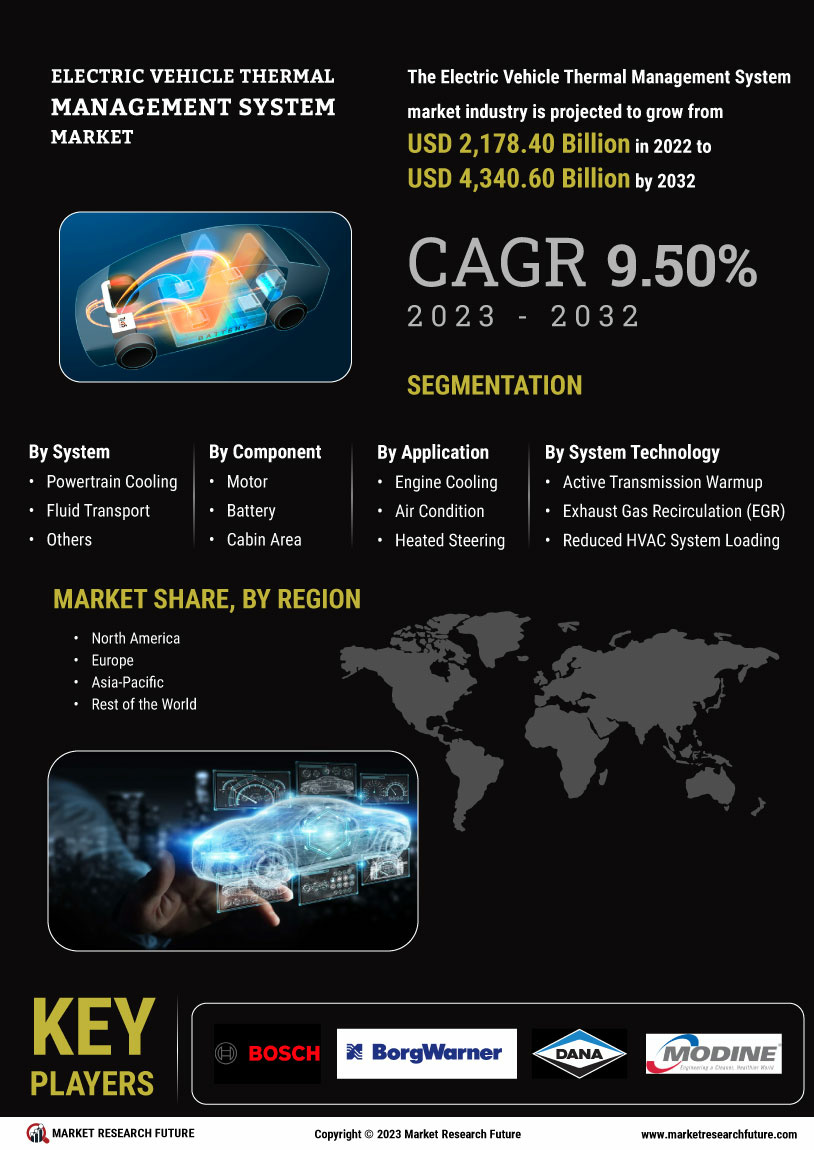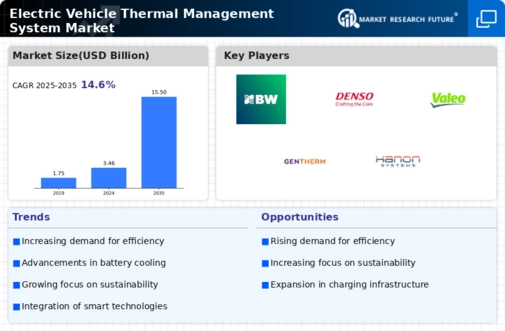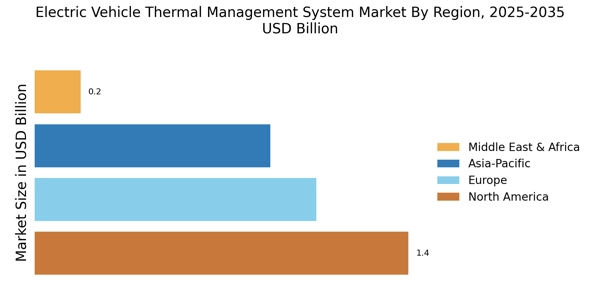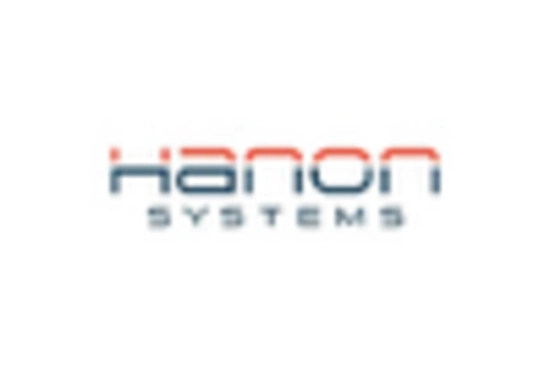The Electric Vehicle Thermal Management System Market is currently characterized by a dynamic competitive landscape, driven by the increasing demand for efficient thermal management solutions in electric vehicles (EVs). Key players such as Valeo (France), Denso (Japan), and BorgWarner (US) are strategically positioning themselves through innovation and partnerships. Valeo (France) has focused on enhancing its product portfolio with advanced thermal management technologies, while Denso (Japan) emphasizes sustainability and energy efficiency in its offerings. BorgWarner (US) is actively pursuing mergers and acquisitions to bolster its capabilities in thermal management, indicating a trend towards consolidation in the market. Collectively, these strategies contribute to a competitive environment that is increasingly focused on technological advancement and sustainability.
In terms of business tactics, companies are localizing manufacturing to reduce costs and optimize supply chains. This approach is particularly relevant in the context of the global push for EV adoption, as it allows for quicker response times to market demands. The market structure appears moderately fragmented, with several key players exerting influence while also facing competition from emerging firms. The collective actions of these major companies shape the market dynamics, fostering an environment where innovation and efficiency are paramount.
In August 2025, Denso (Japan) announced a partnership with a leading battery manufacturer to develop integrated thermal management solutions for next-generation EVs. This collaboration is significant as it aligns with the growing trend of integrating thermal management with battery technology, potentially enhancing overall vehicle performance and efficiency. Such strategic partnerships are likely to set new benchmarks in the industry, emphasizing the importance of collaboration in driving innovation.
In September 2025, Valeo (France) unveiled a new line of thermal management systems designed specifically for high-performance electric vehicles. This launch reflects Valeo's commitment to innovation and its understanding of the evolving needs of the EV market. By focusing on high-performance applications, Valeo positions itself as a leader in the premium segment of the thermal management market, which could attract a new customer base seeking advanced solutions.
In October 2025, BorgWarner (US) completed the acquisition of a thermal management technology startup, enhancing its capabilities in the EV sector. This acquisition is indicative of a broader trend where established players seek to integrate cutting-edge technologies to maintain competitive advantage. By incorporating innovative solutions from startups, BorgWarner aims to accelerate its product development cycle and respond more effectively to market demands.
As of October 2025, the competitive trends in the Electric Vehicle Thermal Management System Market are increasingly defined by digitalization, sustainability, and the integration of artificial intelligence. Strategic alliances are becoming more prevalent, as companies recognize the need for collaboration to drive innovation and meet consumer expectations. Looking ahead, competitive differentiation is likely to evolve from traditional price-based competition to a focus on technological innovation, supply chain reliability, and sustainable practices, underscoring the importance of adaptability in a rapidly changing market.


















Leave a Comment